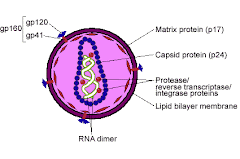"The more drug use begins to affect and control a person's life, the more likely it is that he or she has a drug problem. Unfortunately, substance abusers are often the last ones to recognize their own symptoms of dependence and addiction. If you suspect that a friend or loved one is abusing drugs, it's important to remember that drug abusers often try to conceal their symptoms and downplay their problem. But there are a number of warning signs you can look for:
* Inability to relax or have fun without doing drugs.
* Sudden changes in work or school attendance and quality of work or grades.
* Frequently borrowing money, selling possessions, or stealing items from employer, home, or school.
* Angry outbursts, mood swings, irritability, manic behavior, or overall attitude change.
* Talking incoherently or making inappropriate remarks.
* Deterioration of physical appearance and grooming.
* Wearing sunglasses and/or long sleeve shirts frequently or at inappropriate times.
* No longer spending time with friends who don't use drugs and/or associating with known users.
* Engaging in secretive or suspicious behaviors, such as making frequent trips to the restroom, basement, or other isolated areas where drug use would be undisturbed.
* Talking about drugs all the time and pressuring others to use.
* Expressing feelings of exhaustion, depression, and hopelessness.
* Using drugs first thing in the morning."
Saturday, September 1, 2007
Signs & Symptoms of Drug Use & Abuse
Posted by
Boop
at
1:36 AM
0
comments
![]()
Labels: drug abuse, drug user, fight drug abuse
Friday, August 31, 2007
Fighting Drug Abuse & Addiction
NIDA's mission is to lead the Nation in bringing the power of science to bear on drug abuse and addiction.
This charge has two critical components. The first is the strategic support and conduct of research across a broad range of disciplines. The second is ensuring the rapid and effective dissemination and use of the results of that research to significantly improve prevention, treatment and policy as it relates to drug abuse and addiction."
Posted by
Boop
at
7:39 AM
0
comments
![]()
Labels: destroys families, drug abuse, drug addiction
Thursday, August 30, 2007
HIV Transmission and Prevention in Prisons
"The frequency of homosexual rape in jails and prisons is extremely difficult to estimate. The victim who reports rape in prison faces a probability of further suffering and worse injury. The Federal Bureau of Prisons study reported that 9-20% of federal inmates, especially new or homosexual inmates, were victims of rape.(28) The text of the Prison Rape Reduction Act of 2002 states that the best expert estimate of the percentage of individuals who are sexually attacked at least 1 time during their incarceration is a national median of 13.6%. (The act establishes standards for identifying, investigating, and eliminating prison rape in the United States.)"
HIV Transmission and Prevention in Prisons
Posted by
Boop
at
3:15 AM
0
comments
![]()
Labels: HIV, men getting raped, prisoners, prisons
Wednesday, August 29, 2007
Generational Violence
"The boys in your life need your time and energy. Your son, grandson, nephew, younger brother. The boys you teach, coach and mentor. All need you to help them grow into healthy young men.
Boys are swamped with influences outside of the home – from friends, the neighborhood, television, the internet, music, the movies… everything they see around them. They hear all kinds of messages about what it means to “be a man” – that they have to be tough and in control. There are numerous conflicting and some harmful messages being given to boys about what constitutes “being a man” in a relationship.
Boys need your advice on how to behave toward girls. Boys are watching how you and other men relate to women to figure out their own stance towards girls. So teach boys early, and teach them often, that there is no place for violence in a relationship."
The moral of this is simple: Domestic abuse is generational. When a boy grows up in a home where he sees nothing but violence, he becomes an abuser too.
Posted by
Boop
at
8:33 PM
0
comments
![]()
Labels: domestic abuse, family violence, violence leads to violence
Family Violence - How To Prevent It
"The Family Violence Prevention Fund works to prevent violence within the home, and in the community, to help those whose lives are devastated by violence because everyone has the right to live free of violence.
For more than two decades, the Family Violence Prevention Fund (FVPF) has worked to end violence against women and children around the world. Instrumental in developing the landmark Violence Against Women Act passed by Congress in 1994, the FVPF has continued to break new ground by reaching new audiences including men and youth, promoting leadership within communities to ensure that violence prevention efforts become self-sustaining, and transforming the way health care providers, police, judges, employers and others address violence."
Posted by
Boop
at
7:45 PM
0
comments
![]()
Labels: end the cycle of abuse, family violence

















